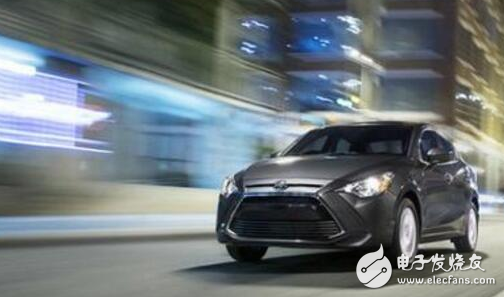As traditional fuel vehicles face a gradual phase-out, the push to eliminate them is becoming more tangible. A growing number of car owners are exploring the transition to new energy vehicles, with pure electric vehicles (EVs) being a major option. However, despite their potential, EVs haven't yet achieved widespread popularity. According to Japanese media, there are three key factors that influence the adoption and promotion of pure electric vehicles.
Beyond France and the UK, countries like China and India are also moving away from gasoline and diesel vehicles toward electric alternatives. While some critics argue that these policies are just empty promises or lack clear implementation strategies, the global shift toward EVs is undeniable. Japan, although slightly behind in this movement, is still working to promote the next generation of vehicles. This article explores the three main reasons why pure electric vehicles may or may not gain mass acceptance.

**Government Incentives**
According to the International Energy Agency (IEA), global hybrid electric vehicle sales increased by 38% in 2016 compared to 2015, reaching 750,000 units, including plug-in hybrids. China led with 340,000 units, followed by the U.S. and Norway. Although they still make up less than 1% of total car sales, the trend is clearly shifting toward fully electric vehicles.
Norway has set an ambitious goal to ban the sale of gasoline and diesel cars by 2025, earlier than both France and the UK. Around 29% of its new car sales are now electric or plug-in hybrid vehicles, leading Europe. The secret to this success lies in strong government incentives. For instance, EVs are exempt from a 25% VAT, often sold at prices lower than diesel cars. They also enjoy free highway access, parking, and priority lanes. To further promote smaller, affordable EVs, Norway introduced a tax on large electric vehicles aimed at wealthier buyers.
In contrast, Japan offers only limited subsidies—up to 400,000 yen (approximately RMB 23,330) for new EV purchases. Officials admit these are far less generous than those in other countries. Even with subsidies, a new EV can cost around 2.5 million yen (about RMB 148,820). If the subsidy were raised to 1 million yen (RMB 58,328), the price would drop to about 2 million yen (RMB 1,166,656), potentially increasing consumer interest.
**Environmental Regulations**
Another key factor driving EV adoption is strict environmental regulations. By 2020, Japan’s fuel efficiency target was set at 20.3 km per liter of gasoline, lower than the EU's 24.4 km per liter in 2021. China, on the other hand, is using national policies to accelerate the adoption of EVs. With fewer parts and a lower entry barrier, China may overtake traditional automotive leaders.
Japan has already seen many new models meet EV targets, but it hasn’t updated its goals accordingly. A government official noted that full EV adoption would require significant industry restructuring. However, experts believe future environmental restrictions will likely grow stricter. One possible path is for Japan to lead in the EV space while supporting the industry through coordinated policies.
**Sales Regulations**
The third key factor is sales regulation. China, for example, requires automakers to produce and sell at least 10% new energy vehicles, including EVs and plug-in hybrids, starting in 2019. California has also shifted focus, removing hybrid vehicles from the definition of "new energy" and emphasizing pure electric options.
In Japan, there is skepticism about regulations that could affect business operations. While such rules might initially cause financial strain, they could ultimately boost competitiveness and drive innovation.
**Is Electric Truly Green?**
Despite being labeled as eco-friendly, the environmental benefits of EVs depend heavily on the power source. In Japan, the Ministry of Economy, Trade and Industry estimates that China’s EVs emit 82 grams of CO₂ per kilometer, due to coal-dependent electricity. This is higher than hybrid vehicles, which emit 69 grams. However, China plans to reduce coal dependence to 51% by 2030, which could bring EV emissions down to 62 grams.
Japan itself uses 32% coal, resulting in 59 grams of COâ‚‚ per kilometer for EVs. Germany emits 49 grams, while France, relying largely on nuclear power, emits just 5 grams. As such, the environmental impact of EVs is closely tied to the energy mix of each country.
Experts suggest that for EVs to be truly sustainable, they must be integrated with broader energy policies. Keio University’s Professor Endo Tetsu emphasized that low-cost, low-emission, and stable nuclear power should be considered alongside EV initiatives. Ultimately, the success of EVs depends on a comprehensive approach involving industrial policy, air quality measures, and climate change mitigation.
CT For DC Immune Electricity Meters
Performance
â—Power frequency insulation strength:The insulation between the primary winding and the secondary winding and the ground part of the CT can bear 4kV power frequency voltage for 1minute
â—Interturn insulation strength:The secondary open circuit, the primary winding through the rated current 1min, no inter-turn damage in the transformer
â—The deviation is better than the industry standards and national standards
DC resistance current transformer has standard mounting hole and high precision,seals with epoxy and uses ABS,PBT,PC flame retardant plastic shell,.It`s temperature resistance >85℃.
Ct For Dc Immune Electricity Meters,High Performance Ct,Excellent Current Transformer,High Precision Ct,DC immune CT
Anyang Kayo Amorphous Technology Co.,Ltd. , https://www.kayoamotech.com
